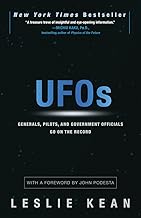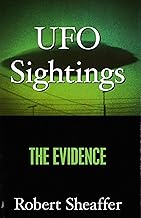Historian Greg Eghigian sheds light on the evolution of UFO sightings and their cultural significance. UFO reports have sparked intrigue and controversy, delving into the unknown. Eghigian, a history and bioethics professor at Penn State University, explores the roots of UFO sightings in his book, “After The Flying Saucers Came.”
The UFO phenomenon gained momentum in 1947 when pilot Kenneth Arnold’s sighting in Washington state sparked headlines about “flying saucers.” This event set the stage for a wave of UFO reports that captured public imagination. The subsequent Roswell incident in New Mexico added fuel to the UFO frenzy, although the initial story was later refuted by the military.
The post-World War II era, characterized by Cold War tensions and technological advancements, provided fertile ground for UFO narratives to take hold. Eghigian emphasizes the interplay between global politics, military secrecy, and public perception in shaping UFO beliefs.
Delving into historical contexts, Eghigian points out that the atomic bomb’s invention in 1945 marked a turning point, possibly attracting extraterrestrial interest. The UFO narrative also intersects with religious and existential themes, offering a sense of hope or salvation amid societal upheavals.
While UFO sightings have been predominantly associated with mid-20th century America, Eghigian acknowledges ancient accounts of unexplained phenomena. However, he cautions against retroactively labeling historical events as UFO sightings, citing the complexities of interpreting ancient texts and artifacts.
Addressing the methodology of assessing UFO reports, Eghigian adopts an agnostic stance, emphasizing the human element in shaping UFO narratives. He highlights cases where credible witnesses, like pilots and police officers, reported inexplicable sightings, challenging skeptics to consider the compelling nature of these accounts.
Over the years, UFO descriptions have evolved, reflecting cultural influences. From early robot-like figures to diverse alien forms, UFO sightings have mirrored societal trends and popular media portrayals. Eghigian underscores the role of media in shaping public perceptions and contributing to the UFO discourse.
Recent developments, such as the release of U.S. Navy footage of unidentified aerial phenomena, have reignited interest in UFO research. Government task forces, scientific inquiries, and NASA’s involvement signal a shift towards more serious investigation of UFO phenomena.
Despite ongoing debates and skepticism, Eghigian remains cautiously optimistic about the potential for civilian-led scientific endeavors to shed light on the UFO mystery. He acknowledges the complexities and challenges of unraveling this enigma but believes that rigorous research and transparent inquiry could offer new insights into the UFO phenomenon.
📰 Related Articles
- Vienna’s Evolution: From Tradition to Modern Cultural Hub
- Unlocking the Cultural Significance of Turkish Coffee Tradition
- Unearthed ’70s Films Illuminate Australia’s Cultural Evolution
- Museums in Da Nang Embrace Digital Innovation for Cultural Evolution
- Madres: Horror Film Explores Cultural Identity in 1970s California






